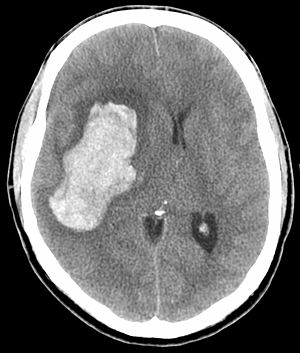
Hypertensive emergency

A hypertensive emergency is high blood pressure with potentially life-threatening symptoms and signs indicative of acute impairment of one or more organ systems (brain, eyes, heart, aorta, or kidneys). Hypertensive urgency is defined as having a systolic blood pressure over 180 mmHg or a diastolic blood pressure over 110 mmHg. Hypertensive emergency is defined as elevated blood pressure consistent with hypertensive urgency, plus evidence of impending irreversible organ damage. Signs of organ damage will be discussed below. A hypertensive emergency is high blood pressure with potentially life-threatening symptoms and signs indicative of acute impairment of one or more organ systems (brain, eyes, heart, aorta, or kidneys). Hypertensive urgency is defined as having a systolic blood pressure over 180 mmHg or a diastolic blood pressure over 110 mmHg. Hypertensive emergency is defined as elevated blood pressure consistent with hypertensive urgency, plus evidence of impending irreversible organ damage. Signs of organ damage will be discussed below. The eyes may show bleeding in the retina, an exudate, cotton-wool spots, scattered splinter hemorrhages, or swelling of the optic disc called papilledema. The brain shows manifestations of increased pressure within the cranium, such as headache, nausea, vomiting, and/or subarachnoid or cerebral hemorrhage. Chest pain may occur due to increased workload on the heart resulting in a mismatch in the oxygen demand and supply to the heart muscle resulting in inadequate delivery of oxygen to meet the heart muscle's metabolic needs. People with hypertensive crises often have chest pain as a result of this mismatch and may suffer from left ventricular dysfunction. The kidneys will be affected, resulting in blood and/or protein in the urine, and acute kidney failure. Patients can have oliguria, edema or fluid retention, and confusion.
